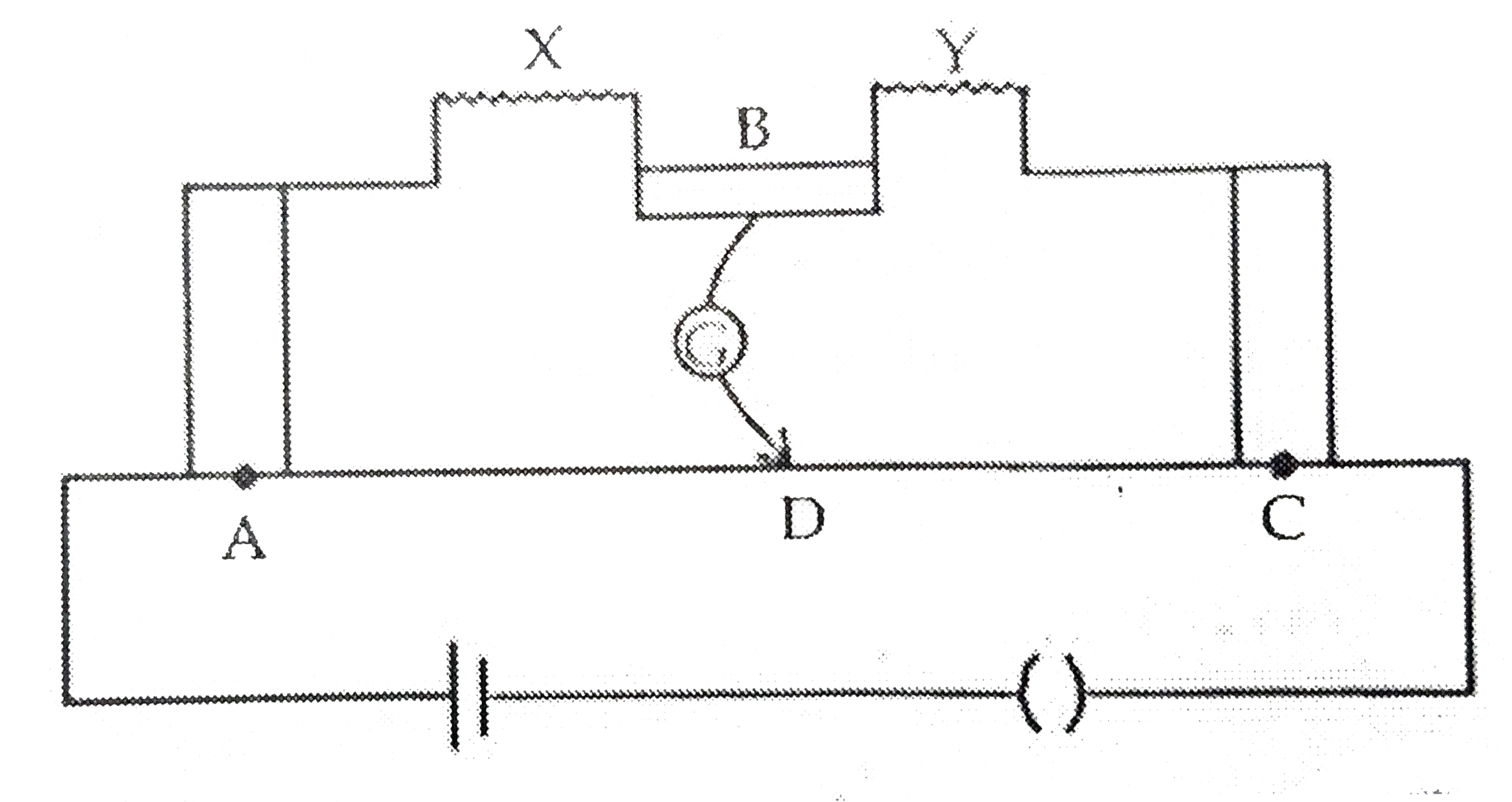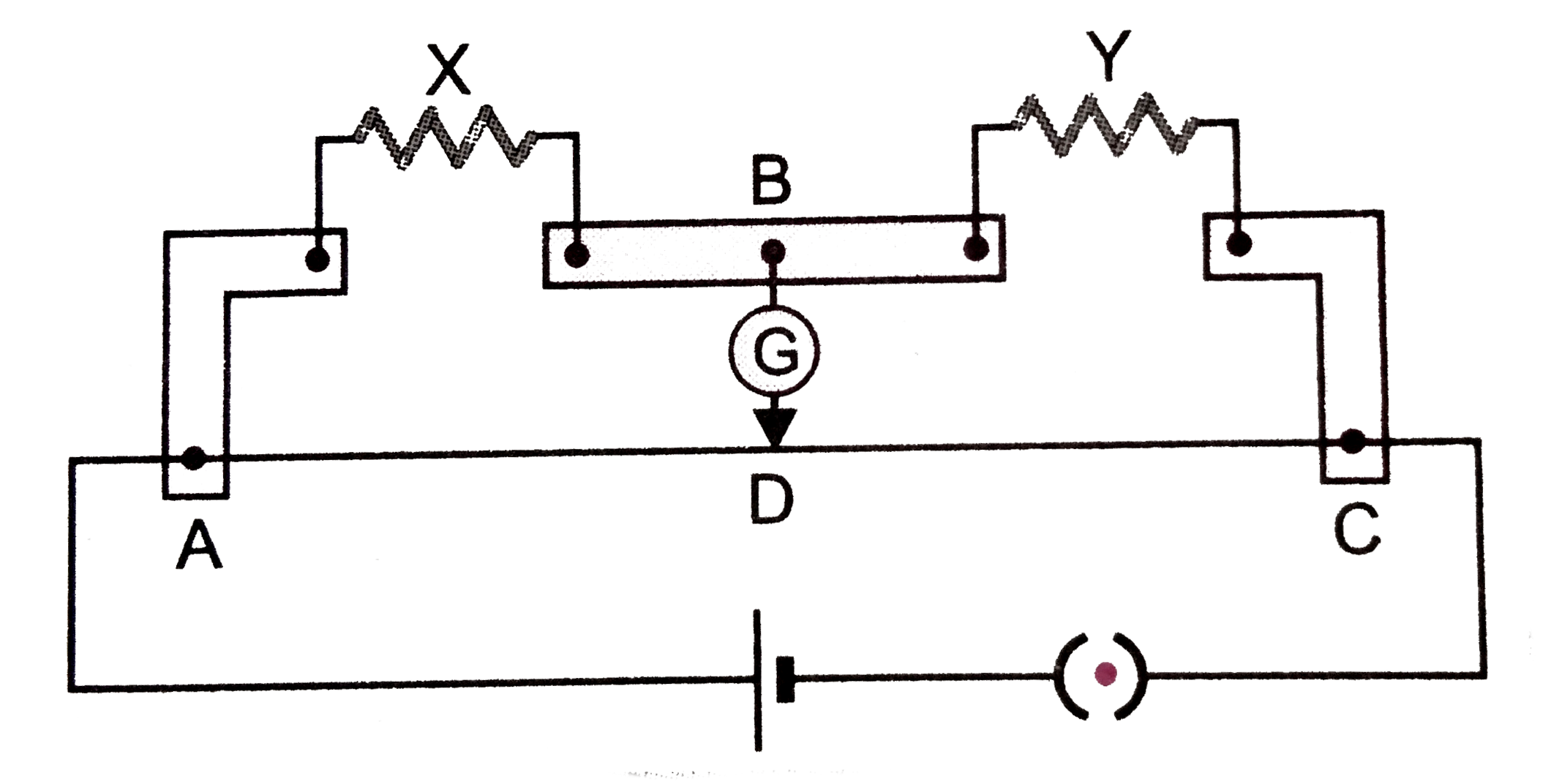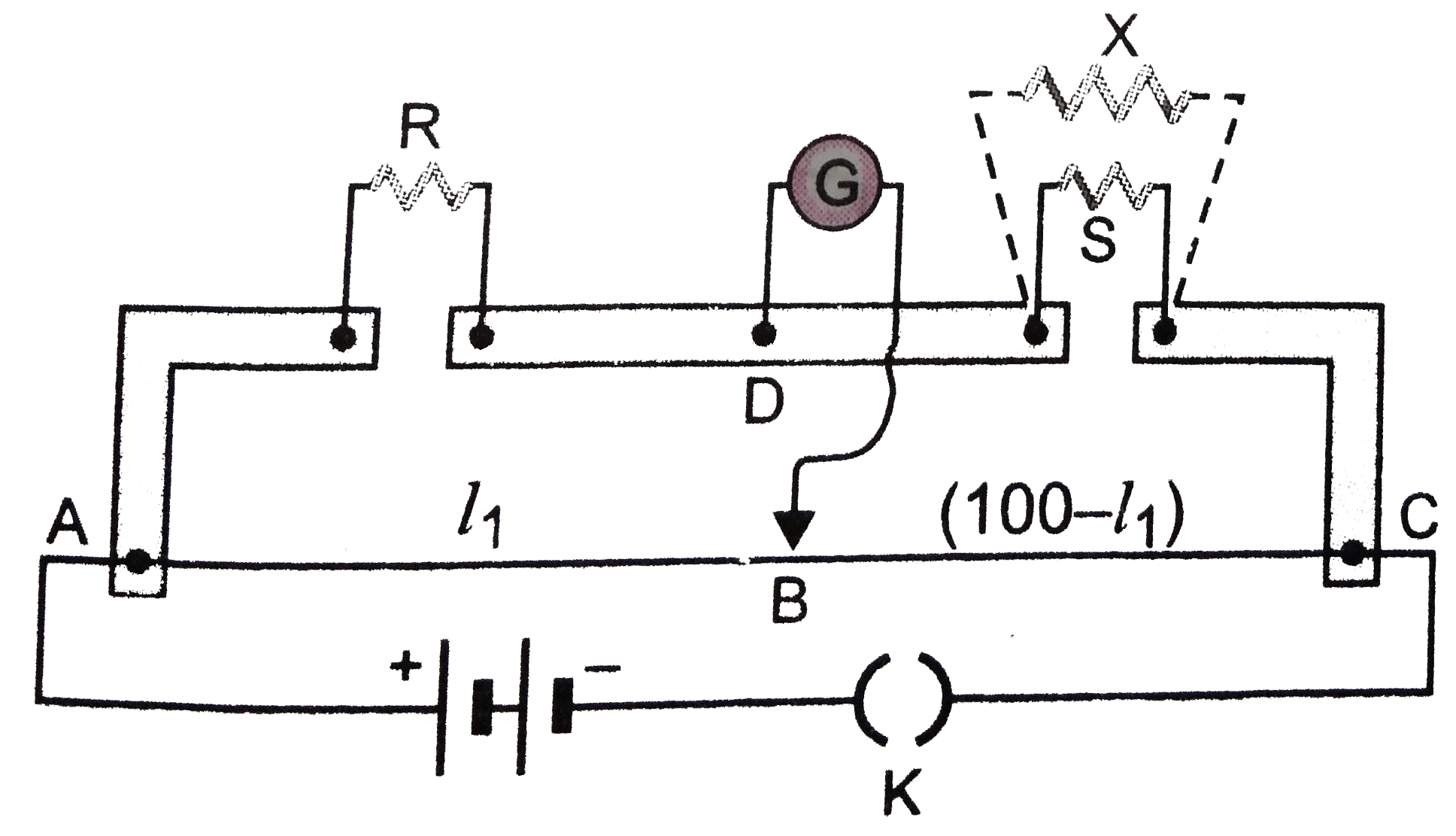In a meter bridge, two unknown resistances R and S, when connected between the two gaps, gives a null point is 60 cm from one end. What is the ratio of R and S?
The correct Answer is:3/2
To solve the problem, we will use the principle of the meter bridge, which states that when the bridge is balanced (null point), the ratio of the resistances is equal to the ratio of the lengths of the wire on either side of the null point.
1. Understanding the Setup:
- In a meter bridge, we have a wire of length 100 cm (1 meter).
- When two resistances R and S are connected, a null point is found at a distance of 60 cm from one end.
2. Identifying Lengths:
- The distance from one end to the null point is 60 cm.
- Therefore, the remaining length from the null point to the other end is:
100cm−60cm=40cm
3. Applying the Meter Bridge Formula:
- According to the meter bridge principle:
RS=Length on one sideLength on the other side
- Substituting the lengths we found:
RS=60cm40cm
4. Simplifying the Ratio:
- Simplifying the ratio:
RS=6040=32
5. Conclusion:
- Therefore, the ratio of the resistances R and S is:
R:S=3:2
- In a meter bridge, we have a wire of length 100 cm (1 meter).
- When two resistances R and S are connected, a null point is found at a distance of 60 cm from one end.
- The distance from one end to the null point is 60 cm.
- Therefore, the remaining length from the null point to the other end is:
100cm−60cm=40cm
- According to the meter bridge principle:
RS=Length on one sideLength on the other side
- Substituting the lengths we found:
RS=60cm40cm
- Simplifying the ratio:
RS=6040=32
- Therefore, the ratio of the resistances R and S is:
R:S=3:2
Topper's Solved these Questions
- BOOK - NAVNEET PUBLICATION - MAHARASHTRA BOARDCHAPTER - QUESTION BANK 2021EXERCISE - CURRENT ELECTRICITY (Short Answer I (SA1) ( 2 MARKS Each ) )8videos
QUESTION BANK 2021
- BOOK - NAVNEET PUBLICATION - MAHARASHTRA BOARDCHAPTER - QUESTION BANK 2021EXERCISE - CURRENT ELECTRICITY ( Short Answer II (SA2) ( 3 MARKS Each ) )7videos
QUESTION BANK 2021
- BOOK - NAVNEET PUBLICATION - MAHARASHTRA BOARDCHAPTER - QUESTION BANK 2021EXERCISE - CURRENT ELECTRICITY (MCQ’S (1 Mark Each) )7videos
QUESTION BANK 2021
- BOOK - NAVNEET PUBLICATION - MAHARASHTRA BOARDCHAPTER - MULTIPLE CHOICE QUESTIONSEXERCISE - Communication Systems6videos
MULTIPLE CHOICE QUESTIONS
- BOOK - NAVNEET PUBLICATION - MAHARASHTRA BOARDCHAPTER - SHORT ANSWER QUESTIONSEXERCISE - Assignments3videos
SHORT ANSWER QUESTIONS
Similar Questions
In a metre bridge, two unknown resistances R and S, when connected in the two gaps, give a null point at 40 cm from one end. What is the ratio of Rand S?
View SolutionThe figure shows experimental set up of a meter bridge. When the two unknown resistances X and Y are inserted, the null point D is obtained 40 cm from the end A. When a resistance of 10Ω is connected in series with X, the null point shifts by 10 cm. Find the position of the null point when the 10Ω resistance is instead connected in series with resistance 'Y'. Determine the value of the resistance X and Y
 View Solution
View Solution
Knowledge Check
- Question 1 - Select One
In a meter bridge experiment, null point is obtained at 20cm from one end of the wire when resistance X is balanced against another resistance Y. If X<Y, then the new position of the null point from the same end, if one decides to balance a resistance of 4X against Y will be at.
A114 cmB80 cmC50 cmD70 cm
Experiment set up of a meter bridge .When the two unknown resistance XandY are intserted, the null point D is obtained 40cm from the end A .When a resistance of 30Ω is connected in series with X the mill point shift by 10cm .Find the position of the point when the 30Ω resistance is connected in series with X, the null point shifts by 10 cm. Find the position of the null point when the 30Ω resistance is connected in series with resistance Y instead of X. Determine the values of resistances XandY
 View Solution
View SolutionThe Fig. shows experimental set up of a metre bridge. When the two unknown resistances X and Yare inserted, the null point Dis obtained 40 cm from the end A. When a resistance of 10Ω is connected in series with X, the null point shifts by 10 cm. Find the position of the null point when the 10Ω resistance is instead | А connected in series with resistance ‘Y. Determine the values of the resistances X and Y.
 View Solution
View SolutionA uniform wire is cut into two pieces such that one piece is twice as long as the other. The two pieces are connected in parallel in the left gap of a metre bridge. When a resistance of 20Ω is connected in the right gap, the null pooint is obtained at 60 cm from the right end of the bridge wire. Find the resistance of the wire before it was cut into two pieces.
View SolutionTwo unknown resistances are connected in two gaps of a meter-bridge. The null point is obtained at 40 cm from left end. A 30Ω resistance is connected in series with the smaller of the two resistances, the null point shifts by 20 cm to the right end. The value of smaller resistance in Ω is
View SolutionTwo diametrically opposite points of a metal ring are connected to two terminals of the left gap of a metre bridge. A resistance of 22Ω is connected in the right gap. If the null point is obtained at 45 cm from the left end, find the resistance of the metal ring.
View SolutionTwo unknown resistances are connected in two gaps of a meter-bridge. The null point is obtained at 40 cm from left end. A 30Ω resistance is connected in series with the smaller of the two resistances, the null point shifts by 20 cm to the right end. The value of smaller resistance in Ω is
View SolutionWhen two known resistance R and S are connected in the left and right gaps of a meter bridge, the balance point is found at a distance l1 from the zero end of the meter bridge wire. An unknown resistance X is now connected in parallel to the resistance S and the balance point is found at a distance l2 from the zero end of the meter bridge wire,

Obtain a formula for X in terms of l1,l2 and S.View Solution

